#Advanced Engine Lubrication
Explore tagged Tumblr posts
Text
Maximize Your Engine's Performance with Full Synthetic 15w40 Diesel Oil

When it comes to diesel engine maintenance, choosing the right oil is crucial. Whether you’re operating a heavy-duty truck, construction equipment, or a passenger diesel vehicle, Full Synthetic 15w40 Diesel Oil is the premium choice for ensuring your engine performs at its best. Its advanced formula offers superior protection, improved fuel efficiency, and extended engine life compared to conventional oils.
What Is Full Synthetic 15w40 Diesel Oil?
Full Synthetic 15w40 Diesel Oil is a high-performance lubricant specifically engineered for diesel engines. Unlike conventional oils, it’s made with synthetic base stocks and advanced additives, providing superior protection under extreme temperatures and heavy loads.
The 15w40 viscosity ensures versatility, delivering excellent lubrication at both low and high temperatures. This makes it the perfect choice for diesel engines operating in a variety of conditions, from long hauls on the highway to demanding off-road applications.
Key Benefits of Full Synthetic 15w40 Diesel Oil
Why should you switch to Full Synthetic 15w40 Diesel Oil? Here are the standout advantages:
Enhanced Engine Protection Full synthetic oil minimizes wear and tear on critical engine components by reducing friction. Its advanced formulation prevents sludge and deposit buildup, ensuring your engine remains clean and efficient.
Superior Temperature Performance Whether it’s a freezing winter morning or a scorching summer day, Full Synthetic 15w40 Diesel Oil maintains its viscosity and delivers consistent performance. This ensures your engine starts smoothly and operates reliably in all climates.
Extended Oil Change Intervals With its superior stability and resistance to breakdown, this oil allows for longer intervals between changes, saving you time and money on maintenance.
Improved Fuel Efficiency By reducing internal friction, Full Synthetic 15w40 Diesel Oil helps your engine operate more efficiently, leading to better fuel economy.
Compatibility with Modern Diesel Engines This oil is ideal for both older and newer diesel engines, meeting the stringent demands of modern emission control systems like diesel particulate filters (DPFs) and selective catalytic reduction (SCR) systems.
Why Choose Full Synthetic 15w40 Diesel Oil?
Diesel engines are built to handle heavy loads and tough conditions, but they also require a lubricant that can match their performance demands. Full Synthetic 15w40 Diesel Oil is specifically formulated to handle the challenges of high-pressure diesel engines, providing the protection and efficiency they need to perform at their peak.
By investing in this premium oil, you’re not just ensuring better performance—you’re extending the lifespan of your engine and reducing costly repairs.
Tips for Using Full Synthetic 15w40 Diesel Oil
To get the most out of your oil, follow these tips:
Follow Manufacturer Recommendations: Always check your engine manual to ensure compatibility with synthetic 15w40 diesel oil.
Regularly Monitor Oil Levels: Maintain proper oil levels to prevent engine wear and overheating.
Schedule Oil Changes: Stick to recommended oil change intervals to keep your engine in top condition.
Where to Buy Full Synthetic 15w40 Diesel Oil
Ready to give your diesel engine the best possible care? Visit Doxa Lubes to purchase Full Synthetic 15w40 Diesel Oil. With its advanced formula and unbeatable performance, it’s the ultimate choice for protecting your engine and maximizing its efficiency.
Conclusion
Your diesel engine deserves the best, and Full Synthetic 15w40 Diesel Oil delivers just that. With its superior protection, enhanced fuel economy, and extended oil change intervals, it’s a smart investment for anyone who relies on their diesel-powered vehicle.
Make the switch today and experience the difference of premium synthetic oil.
Explore more and order now: Full Synthetic 15w40 Diesel Oil
#Full Synthetic 15w40 Diesel Oil#Diesel Engine Maintenance#Synthetic Oil Benefits#High-Performance Diesel Oil#Diesel Engine Protection#Fuel Efficiency#Extended Oil Change Intervals#Advanced Engine Lubrication#Engine Care Tips#Doxa Lubes
0 notes
Text
Manufacturer of Premium Cylinder Blocks for Superior Engine Performance: Dasset Engineering
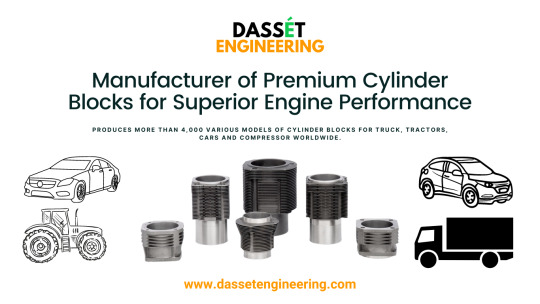
In the competitive world of automotive engineering, the importance of high-quality components cannot be overstated. Among these, cylinder blocks play a crucial role in determining the performance and longevity of an engine. At Dasset Engineering, we specialize in manufacturing premium cylinder blocks that deliver superior engine performance. This blog delves into the significance of cylinder blocks, the attributes of our premium products, and why Dasset Engineering stands out in this industry.
The Importance of Cylinder Blocks
The cylinder block is the backbone of any internal combustion engine. It houses the cylinders, coolant passages, and oil galleries, providing structural integrity and maintaining optimal engine temperature. The performance, efficiency, and durability of an engine largely depend on the quality of the cylinder block. Poorly manufactured blocks can lead to overheating, oil leaks, and ultimately, engine failure.
Attributes of Premium Cylinder Blocks
At Dasset Engineering, we understand that premium cylinder blocks are not just about high-grade materials but also about precision engineering and meticulous craftsmanship. Here are some key attributes that define our premium cylinder blocks:
High-Quality Materials
We use the finest materials, such as cast iron and aluminum alloys, to manufacture our cylinder blocks. These materials offer excellent durability, heat resistance, and strength, ensuring that the engine performs optimally under various conditions.
Precision Engineering
Our cylinder blocks are engineered with precision to meet exact specifications. Advanced machining techniques ensure that each block has the correct dimensions, smooth surfaces, and precise alignment of the cylinders. This precision is crucial for achieving optimal engine performance and efficiency.
Superior Cooling and Lubrication
Efficient cooling and lubrication are vital for engine performance and longevity. Our cylinder blocks feature optimized coolant passages and oil galleries that ensure efficient heat dissipation and lubrication. This reduces the risk of overheating and wear, thereby extending the engine's lifespan.
Rigorous Testing
Every cylinder block manufactured by Dasset Engineering undergoes rigorous testing to ensure it meets the highest standards of quality and performance. We conduct various tests, including pressure testing, thermal cycling, and dimensional inspections, to verify the integrity and reliability of our products.
Why Choose Dasset Engineering?
Dasset Engineering has established itself as a leading manufacturer of premium cylinder blocks, and here's why:
Expertise and Experience
With years of experience in the industry, we possess the technical expertise and knowledge required to produce top-tier cylinder blocks. Our team of skilled engineers and technicians is dedicated to delivering products that exceed customer expectations.
State-of-the-Art Facilities
We operate state-of-the-art manufacturing facilities equipped with the latest machinery and technology. This allows us to maintain strict quality control and produce cylinder blocks that meet the most demanding specifications.
Commitment to Quality
Quality is at the core of everything we do. From sourcing the best materials to implementing stringent quality control measures, we are committed to delivering cylinder blocks that offer unmatched performance and reliability.
Customer-Centric Approach
At Dasset Engineering, we believe in building long-term relationships with our customers. We work closely with them to understand their specific needs and provide customized solutions that cater to their requirements.
Conclusion
The cylinder block is a critical component that significantly impacts an engine's performance, efficiency, and durability. At Dasset Engineering, we take pride in manufacturing premium cylinder blocks that set the benchmark for quality and performance. By choosing our products, you are investing in superior engine performance, reliability, and longevity. Trust Dasset Engineering to be your partner in achieving excellence in automotive engineering.
#High-quality cylinder blocks for engines#Premium engine cylinder block manufacturer#Superior engine performance cylinder blocks#Precision-engineered cylinder blocks#Best materials for cylinder blocks#Advanced machining cylinder blocks#Cylinder blocks with optimized cooling#Durable cylinder blocks for automotive engines#Reliable cylinder blocks for high-performance engines#Custom cylinder block manufacturing#Top-rated cylinder block manufacturers#Cylinder blocks with efficient lubrication#Engine cylinder block quality testing#Benefits of premium cylinder blocks#Engine longevity with high-quality cylinder blocks#Cylinder block structural integrity for engines#Leading cylinder block manufacturers in the industry#State-of-the-art cylinder block production facilities#Expert cylinder block engineering services#Long-lasting cylinder blocks for vehicles
0 notes
Text



Pegaso Z-102 "Maqueta Exposiciones," 1952. A transparent version of the Spanish supercar that was presented at the Paris and Barcelona motor shows. For its time the Pegaso was very advanced having a DOHC all-alloy V8 engine with dry-sump lubrication and a 5-speed transaxle gearbox.
#Pegaso#Pegaso Z-102#Pegaso Z-102 Maqueta Exposiciones#transparent cars#show car#DOHC#V8#See-through#transaxle#Spanish cars#dead brands
194 notes
·
View notes
Text

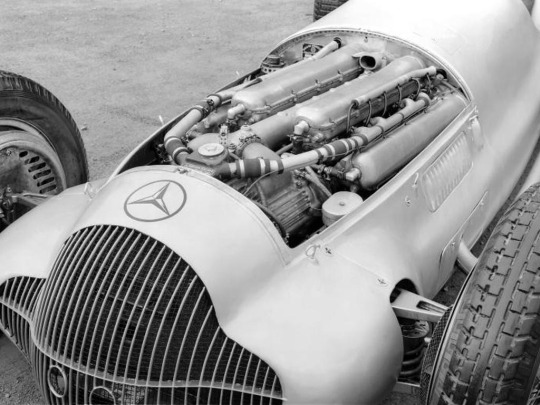
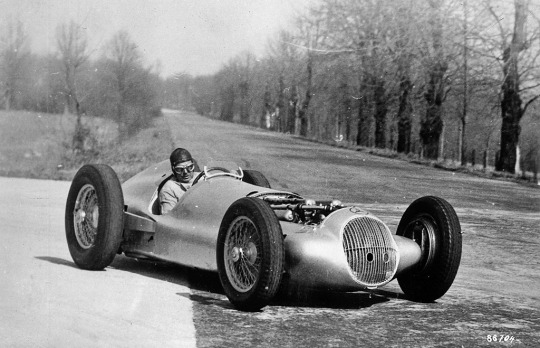
1938 Mercedes-Benz W154
In September 1936, the AIACR (Association Internationale des Automobile Clubs Reconnus), the governing body of motor racing, set the new Grand Prix regulations effective from 1938. Key stipulations included a maximum engine displacement of three liters for supercharged engines and 4.5 liters for naturally aspirated engines, with a minimum car weight ranging from 400 to 850 kilograms, depending on engine size.
By the end of the 1937 season, Mercedes-Benz engineers were already hard at work developing the new W154, exploring various ideas, including a naturally aspirated engine with a W24 configuration, a rear-mounted engine, direct fuel injection, and fully streamlined bodies. Ultimately, due to heat management considerations, they opted for an in-house developed 60-degree V12 engine designed by Albert Heess. This engine mirrored the displacement characteristics of the 1924 supercharged two-liter M 2 L 8 engine, with each of its 12 cylinders displacing 250 cc. Using glycol as a coolant allowed temperatures to reach up to 125°C. The engine featured four overhead camshafts operating 48 valves via forked rocker arms, with three cylinders combined under welded coolant jackets, and non-removable heads. It had a high-capacity lubrication system, circulating 100 liters of oil per minute, and initially utilized two single-stage superchargers, later replaced by a more efficient two-stage supercharger in 1939.
The first prototype engine ran on the test bench in January 1938, and by February 7, it had achieved a nearly trouble-free test run, producing 427 hp (314 kW) at 8,000 rpm. During the first half of the season, drivers such as Caracciola, Lang, von Brauchitsch, and Seaman had access to 430 hp (316 kW), which later increased to over 468 hp (344 kW). At the Reims circuit, Hermann Lang's W154 was equipped with the most powerful version, delivering 474 hp (349 kW) and reaching 283 km/h (176 mph) on the straights. Notably, the W154 was the first Mercedes-Benz racing car to feature a five-speed gearbox.
Max Wagner, tasked with designing the suspension, had an easier job than his counterparts working on the engine. He retained much of the advanced chassis architecture from the previous year's W125 but enhanced the torsional rigidity of the frame by 30 percent. The V12 engine was mounted low and at an angle, with the carburetor air intakes extending through the expanded radiator grille.
The driver sat to the right of the propeller shaft, and the W154's sleek body sat close to the ground, lower than the tops of its tires. This design gave the car a dynamic appearance and a low center of gravity. Both Manfred von Brauchitsch and Richard Seaman, whose technical insights were highly valued by Chief Engineer Rudolf Uhlenhaut, praised the car's excellent handling.
The W154 became the most successful Silver Arrow of its era. Rudolf Caracciola secured the 1938 European Championship title (as the World Championship did not yet exist), and the W154 won three of the four Grand Prix races that counted towards the championship.
To ensure proper weight distribution, a saddle tank was installed above the driver's legs. In 1939, the addition of a two-stage supercharger boosted the V12 engine, now named the M163, to 483 hp (355 kW) at 7,800 rpm. Despite the AIACR's efforts to curb the speed of Grand Prix cars, the new three-liter formula cars matched the lap times of the 1937 750-kg formula cars, demonstrating that their attempt was largely unsuccessful. Over the winter of 1938-39, the W154 saw several refinements, including a higher cowl line around the cockpit for improved driver safety and a small, streamlined instrument panel mounted to the saddle tank. As per Uhlenhaut’s philosophy, only essential information was displayed, centered around a large tachometer flanked by water and oil temperature gauges, ensuring the driver wasn't overwhelmed by unnecessary data.
101 notes
·
View notes
Text
A Mechanic’s Worries about Pilots.
A gifted mechanic is called in to service a pilot. As The Mechanic begins to head towards her station to work on the pilot, she can’t help but ruminate on her feelings about pilots. She honestly doesn’t like them.
It’s not a personal thing, she’s sure that they were great people at one point, but it’s hard to see them like that anymore. She finds the whole thing creepy and offputting. She see’s what they do to pilots, knows how they’re made. She probably understands the process more than anybody on the base. She’s a prodigy in mecha suit engineering, which also includes pilot systems.
It makes her uncomfortable. The pilots are treated like objects, tools of war. That’s what they are too, what they’re made to be. Their skulls are full of tech that hooks them straight into their mechs, their brains fried with dopamine and other kinds of chemical soup to reward them when they shoot targets into slag. They even end up sharing the space in their head with the onboard ai’s of their mechs. They’re locked into the mechanical nerves and metal muscles of the mech. It makes them amazing killing machines, but their minds are practically crippled outside of the suits, raw and untethered, ungrounded.
The weirdest thing to her is they seem so happy. It doesn’t even look like it’s just the chemicals, it can’t be. They like it, whatever fucked up experience they’re having, it’s making them happy as can be. They want to get back into the suits, they want to push more. They like getting bossed around like dogs by their handlers. They love their ai’s almost like some weird fusion of a lover, a sibling, and a reflection. They can barely even articulate how they feel, most don’t bother, but The Mechanic has worked in this business long enough to learn anyways.
She gets to her workshop. It’s honestly kind of pathetic, barely worthy of the name. She knows that the pilots are treated as tools, but mechanics aren’t treated much better. Human but still not really worthy of respect. They work her and the other mechanics like slaves, cramping them into the crawl spaces where stuff needs fixing. Even with her advanced position all they afford her is this broom closet from hell. The room is cramped and humid, like a small metal sauna. It’s still marginally better than the communal workshop. Even with the bigger and more open room it still somehow manages to be claustrophobic and hot.
The Pilot is already there, sitting on her workbench, completely naked. The Mechanic isn’t surprised, but her face still burns with heat as she blushes when seeing The Pilot’s bare ass resting on the same giant hunk of tungsten-steel alloy she uses to fix delicate parts and machinery. The Pilot’s augs are invasive and take up a good portion of its body. Its arms, its legs, and a good portion of its back are more machine than human at this point. Normally the jumpsuits account for this, but those would get in the way of repairs. Normal clothes would too, and developing some kind of modesty cover for them is more trouble than it’s worth for the higher ups. They don’t have to deal with the nudity, and it’s not like the pilots even care.
The Mechanic wipes the sweat from her brow and crosses the room. She doesn’t actually acknowledge The Pilot aside from the blushing, but The Pilot’s gaze follows her as she makes her way over to a box of tools. She sets the box down next to The pilots thigh and pulls over the ratty stool she uses for a chair.
She starts servicing The Pilot. She pulls out delicate tools and with ingrained precision she begins opening up The Pilot’s augs, starting with the legs and going up. She hooks its systems up to an old box of a diagnostics unit and begins manually inspecting the parts. She pulls wires aside with tiny fractions of force and checks on the tiny sensors and servos that are no bigger than her fingernail, cleaning them with tiny swabs and lubricating them with drops of oil.
The entire time she keeps hearing weird noises. Soft whines and sounds of scraping play at the edge of her attention, distracting her just the tiniest amount. The Mechanic can’t tell where the noises are coming from, and it’s bothering the shit out of her. When she takes a step back to unfocus and wipe the sweat from her forehead, she sees where it’s coming from.
It’s the pilot. It’s breathing heavily, like it’s exhausted. Its face is almost as flushed as The Mechanic’s when she walked in. The metal tips of its fingers scratch at the polished surface of her workbench. Jesus fucking christ, was The Pilot turned on right now? With the face it was making it had to be.
Fuck, now The Mechanic was thrown way off. It was already hard enough to try and pretend this was just normal machine servicing when all of the machinery was attached to a sweaty, naked girl, it was impossible to do it when she knew it was getting off to her poking around in its augments.
The Mechanic just couldn’t get back into the same groove she had before. Every stifled moan disrupted her concentration. Every squirm messed up her precise motions. Everything just kept bringing her back into the moment, where her face was inches away from the pilot’s crotch.
The Mechanic slogged through the rest of the grueling work, doing her best to try and travel into that little place in the back of her mind where she could just stop thinking and do what she was good at. She finished with the legs and then told the pilot directly to lay down so she could begin on her arms.
The Pilot laid down like it was told. The Mechanic scooted her stool forward and raised the seat for a better vantage. In the end the new position wasn’t all that much better than the old. The Pilot’s left arm was cradled on The Mechanic’s lap while she popped it open and began working on it.
It was more of the same. Nothing wrong but basic cleanup, which meant The Mechanic wouldn’t be busy enough to zone out. She could see its face clearly now. It looked so human, so lively. When she pressed a sensor its hand tensed and squirmed, pushing against her stomach a bit. A tugged wire elicited a slight yip of surprise. It felt so carnal, to dig into this things innards and just mess around.
Seeing it like this, The Mechanic couldn’t help but wonder about the difference between the two. Right now it looked just as human as she was, so she couldn’t apply the same cold business mentality she usually did with her work. She felt like they were almost one in the same. I mean, look at it, being a pilot can’t be so bad, right?
The Mechanic’s thoughts ground to a halt. Her surprise was so sudden it caused her to tweak a wire hard enough to get The Pilot to let out a proper yelp. Neither could tell if it was a yelp of pleasure or pain.
What had she just thought? Seriously, what the hell was that? Was she serious? Of course being a pilot is bad, being treated like a mindless dog, worked like a machine, and used like a toy. The Mechanic barely knew where that thought had even come from. I mean, it and her were nothing alike.
The Mechanic stewed in those thoughts, trying to reassure herself that she was nothing like it. She wasn’t an it. The Mechanic was a person, and it was just a pilot. The Mechanic tried her best to just focus on the work, but she couldn’t. The thoughts bothered her so much, and she really couldn’t dismiss them.
Because they were alike, very much alike. Not in the sense that The Pilot was a person. In the sense that The Mechanic wasn’t.
The Mechanic couldn’t help but feel it. She was a cog in a much larger machine, a tiny piece. She was treated almost the same as The Pilot
The Mechanic was worked like a dog. She was given shit conditions and forced to do shittier things. She was expendable, one in a million. You could point to almost any outward aspect of the two of them and they would match up.
The thing that frustrated The Mechanic even more was how they were the same on the inside too.
The Mechanic knew what it felt like to become something bigger. Working in the engineering wing was like being in a hive mind. You’re practically shoulder to shoulder with the people next to you. You become parts of the same whole, you work together, you sweat together, you create together. She can’t even remember how many times she had needed something, a part, a tool, a towel, anything, and a mechanic next to her had just known, and given it to her. She knew she had done the same for others all the time.
She could admit to feeling like an it sometimes. Stripped of your identity, down to everything but your use. She didn’t know The Pilot’s name, and The Pilot probably didn’t know her’s. She was a mechanic. She was nothing but the job she did. A function, not a person.
Her head pounded as she adjusted her grip on The Pilot’s arm. Her head buzzed and it felt like her brain was melting in the heat of the room. She could imagine the wires burning up and melting their rubber casings. The copper and metal fusing together into a frenzied mess as her thoughts jumbled into each other.
She shook her head violently. God she was losing it! Her brain wasn’t made of wires, it was made of meat! She wasn’t overheating, she was just getting some kind of headache. She closed up the first arm, not even sure if she was really done, and told the pilot to swap sides through gritted teeth.
She wanted things to be simpler. She wanted to stop thinking. She just wanted to do her job. The Mechanic missed the engineering floor. She missed the absent thrum as she worked alongside her fellow workers, their thoughts synchronizing into a beautiful and productive symphony. She wanted to be a part of that, of it. She just wanted to be a Mechanic, that was so much easier than all of this.
Is that why pilot’s are so happy? Are they so content because that’s what it feels like? The Mechanic thought about it in her own terms. Would she give up her body to work more efficiently? Would she open up her mind, just to be even closer with the other mechanics? Would she shed all of the cumbersome weight that thinking like a person had, and just become a simple and unbothered it?
The answer was yes. The Mechanic wanted that. The simple, pure existence of it. The Mechanic wanted to be that, and nothing more. When it realized that, it had a much easier time working on The Pilot’s arm.
It finished up The Pilot’s back in no time too. Without all of the messy thoughts clogging up its head, the whole thing went smoothly. The Pilot was sent on her way, on wobbly legs and with shaky breath. The Mechanic might have messed with it a bit more than necessary, but it liked to consider that a reward, for good behavior.
The Mechanic realized it wanted a bit of a career shift. It thought that if being a mechanic was good, then being a pilot must be great! It loved working on machines, but it wanted that sense of empty completion even more. Plus, it’s not like it won’t be allowed to also do mechanic work still. It would be a lot better for everyone if it got to service its own mech. It would be a win win. The Mechanic wiped down its workbench for the last time, and with renewed vigor, went to sign up to become a pilot.
119 notes
·
View notes
Text
Bored with your masturbator? Discover new ways to spice things up.

I. Feeling a bit "numb" to your masturbator lately?
Been using the same fleshlight for years? Starting to notice:
That first-time thrill is gone
Need porn to finish, and climax feels harder to reach
Empty or even tired after orgasm
Different textures and features don’t really change much You’re not alone. Most men experience dulled pleasure because repeatedly stimulating the same area desensitizes pleasure nerves over time.
II. The Male Body Has Multiple "Pleasure Triggers" Men have more than just the penis as an erogenous zone—these often-overlooked areas are just as important: Perineum (the area between the penis and anus): A pleasure booster that enhances orgasm depth, delivering euphoric sensations. Base of the Scrotum: Gentle stimulation here creates a warm, enveloping pleasure. Anal Opening: Packed with sensitive nerves, this "semi-automatic contraction zone" produces rhythmic spasms (like a heartbeat) without pain. 3-5 cm Inside the Anus: The "ignition point" for full-body pleasure—men’s second pleasure engine. Outer Anal Rim: Stimulation here triggers a feedback loop, activating pleasure pathways to both the anus and perineum. Inner Thighs: While not a direct erogenous zone, teasing this area builds anticipation, creating a tingling, "open-up" effect emotionally.
Stimulating these zones simultaneously can transform your climax from a "single note" into a "symphony."
III. How to Play with "Multi-Point Stimulation"? Here's a Practical Plan for You Taking "Comfly" as an example, this is a male device designed for "multi-point pleasure": Area Stimulation Method Comfly Module Penis Tight wrapping & soothing wrapping stimulation, simultaneous sliding and swinging stimulation Penis Massage Component Perineum & Scrotum Soft sliding friction and vibration stimulation, wrapping to simulate licking stimulation Perineum Extension Head Anus Intense insertion stimulation & beginner-friendly non-insertion stimulation for rear development Non-Insertion Massage Head & Insertion Massage Head
Usage Recommendations: Lubrication is essential: Apply water-based lubricant to all contact areas to enhance conductivity and comfort. External before internal: Begin with the non-insertable anal massager for "warm-up," then switch to the insertable type once arousal intensifies. Five-step method: Follow the Comfly 5-Step Technique for quick mastery and efficient results
IV. Four Advanced Playstyles for a Sense of Achievement 1.Pleasure Awakening Mode (Beginner-Friendly)
Non-insertable anal massager
Pain-free exploration of perineal and anal pleasure 2.Extended Pleasure Plateau Mode (For Experienced Users)
Wearable design for mastering personal pleasure thresholds
Practice edging (stopping just before climax) 3.Effortless Prostate Orgasm (For P-Spot Enthusiasts)
Master the 28-ratio stimulation rule (balancing anal and penile stimulation)
Achieve consistent prostate orgasms with seamless control 4.Fusion Orgasm Mode (Experts Only)
Triple-zone stimulation for hands-free, full-body pleasure
Customizable combos for experiences beyond prostate orgasms
V. Don’t Waste Pleasure on Amateur Moves You might be tired of the same old routine, but pleasure hasn’t gone anywhere—you just haven’t unlocked all of your body’s "switches" yet. Rebooting your pleasure circuits is the ultimate gift to yourself.
4 notes
·
View notes
Text
Black inventors

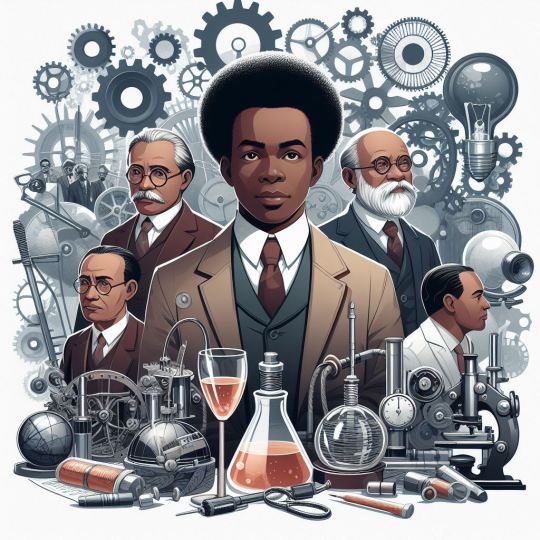







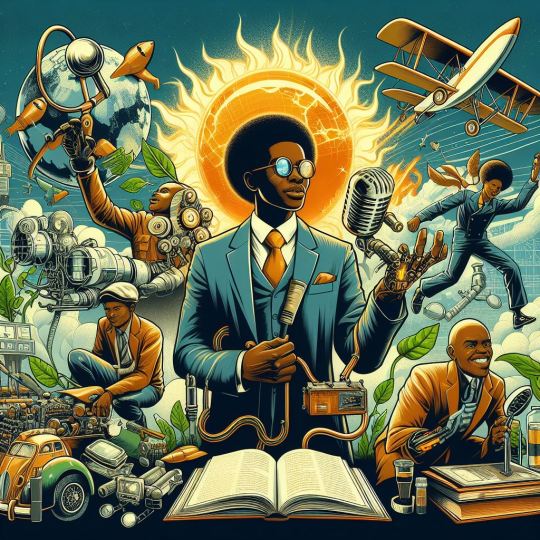



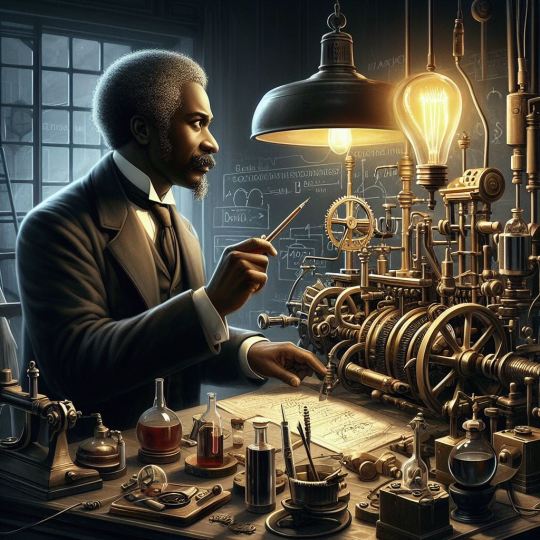
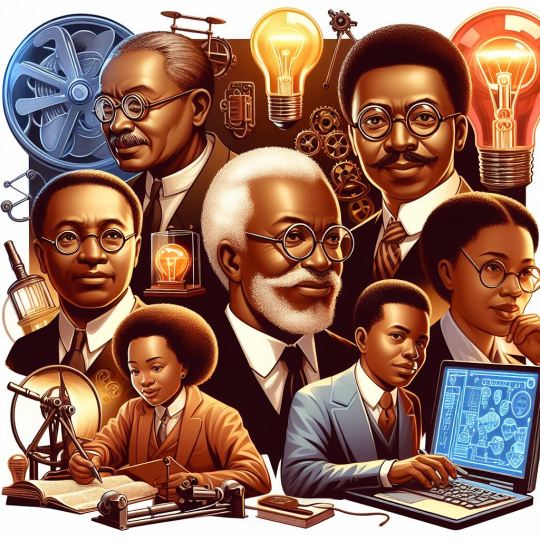
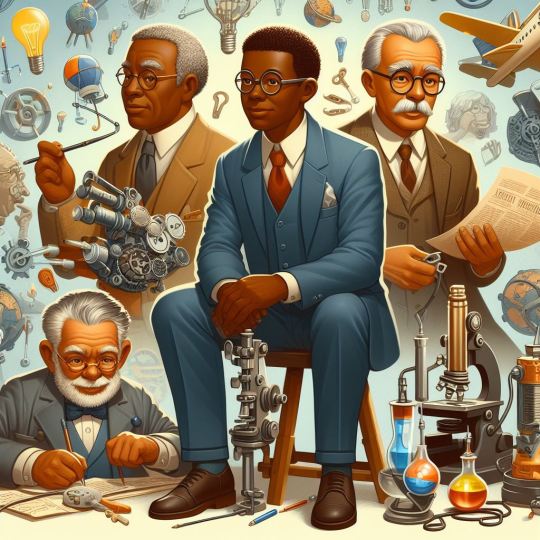
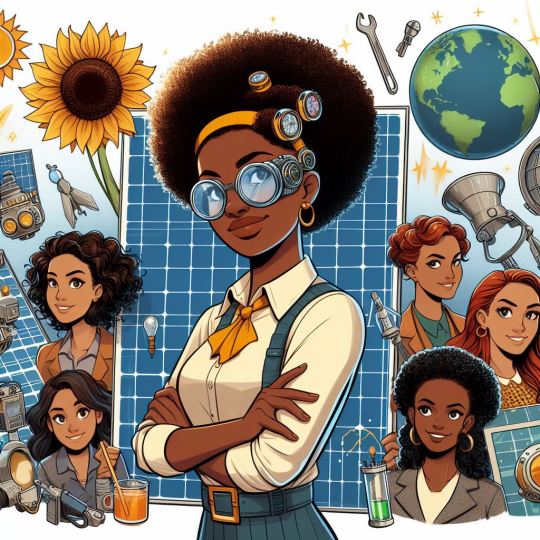



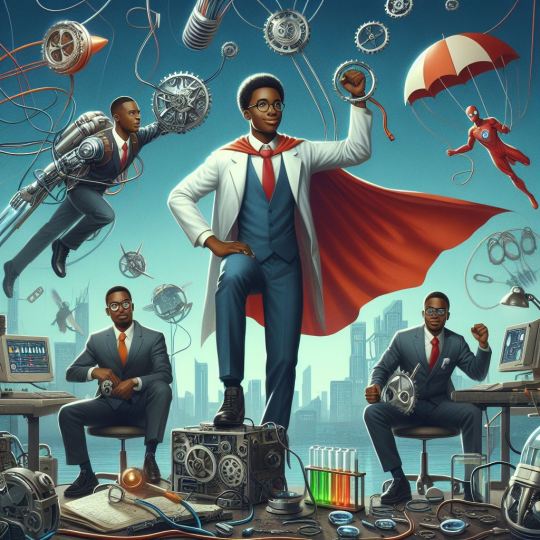


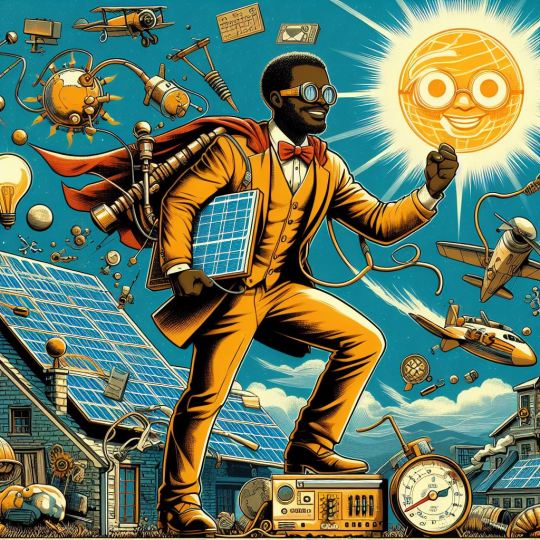

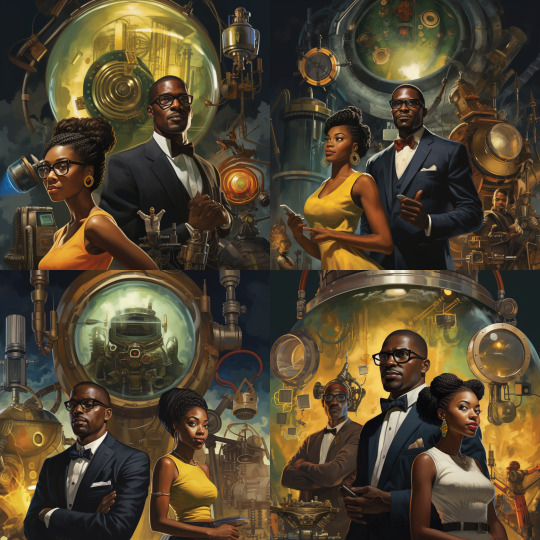
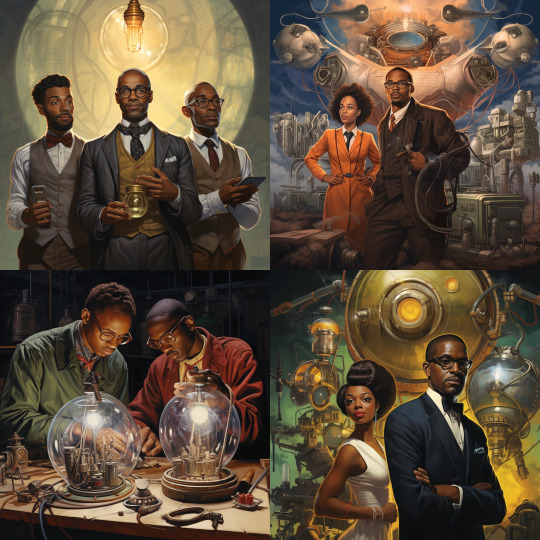


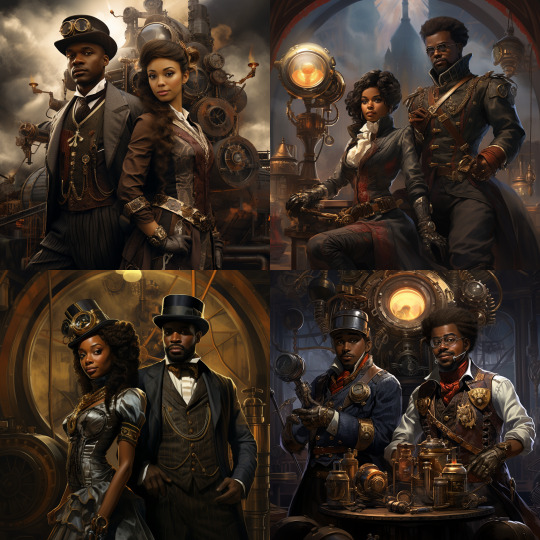
From Perplexity:
Famous black inventors have significantly contributed to various fields, from everyday household items to groundbreaking technological advancements. Here are some notable figures:
George Crum (1824-1914): A chef who is credited with inventing the potato chip in 1853[1].
Frederick McKinley Jones (1893-1961): Developed refrigeration equipment for trucks, trains, ships, and planes, receiving over 40 patents. His invention, the Thermo King, revolutionized the food and medical transport industries[1].
Granville T. Woods (1856-1910): Accumulated almost 60 patents, improving railroad functioning. Notably, he invented the induction telegraph system for train communication[1].
George Washington Carver (1864-1943): An agricultural chemist who developed 518 products from peanuts and sweet potatoes, including ink, dye, soap, and synthetic rubber[1].
Madam C.J. Walker (1867-1919): Became the first African American woman self-made millionaire by creating a line of hair products for African American women[1].
Garrett Morgan (1877-1963): Invented the traffic signal and a safety hood that served as a prototype for the gas mask[1].
Mary Beatrice Davidson Kenner: Patented the sanitary belt in 1957, a significant advancement in women's health and hygiene[1].
Thomas L. Jennings (1791–1859): The first African American to receive a U.S. patent, for a dry-cleaning process[4].
Patricia Bath (1942-2019): Invented a laser cataract treatment, becoming the first African American female doctor to receive a medical patent[4].
Mark Dean (1957-present): Holds over 20 patents, including contributions to the creation of the color PC monitor and the first gigahertz chip[4].
Elijah McCoy (1844-1929): Known for his invention of the automatic lubricator for oiling steam engines, leading to the phrase "the real McCoy" to denote something authentic[4].
These inventors have left a lasting impact on society, demonstrating ingenuity and perseverance in the face of challenges.
Citations: [1] https://www.oprahdaily.com/life/work-money/g30877473/african-american-inventors/ [2] https://www.parents.com/kids/education/world-changing-black-inventors-that-every-kid-should-know-about/ [3] https://www.black-inventor.com [4] https://www.biography.com/inventors/g46697619/famous-black-inventors [5] https://en.wikipedia.org/wiki/List_of_African-American_inventors_and_scientists
From Gemini (formerly Bard):
20 Famous Black Investors with Short Descriptions:
Dr. Shirley Jackson: First Black woman to earn a doctorate in nuclear physics, invested in research and development for the U.S. Department of Defense.
Robert F. Smith: Founded Vista Equity Partners, a private equity firm with over $85 billion in assets under management. Known for his philanthropic endeavors.
Oprah Winfrey: Media mogul and investor, known for her investments in cable channels, production companies, and Weight Watchers.
Udayan I. Lekhraj: Founded CMG Partners, a private equity firm specializing in healthcare investments. Advocate for diversity and inclusion in venture capital.
Catherine Hughes: Founded Urban One, a media company serving the African American community. First Black woman to chair a publicly traded company in the U.S.
Rodney Bryant: Co-founded JUST Capital, a firm that measures and incentivizes corporations to prioritize stakeholder capitalism.
Ellen Johnson Sirleaf: Former President of Liberia, Nobel Peace Prize winner. Focused on economic development and investment in her country.
Ronald Lauder: CEO of Estee Lauder Companies, known for his investments in the beauty industry and philanthropic work.
Charles R. Bronfman: Chairman of The Seagram Company Ltd., invested in various industries including entertainment, real estate, and philanthropy.
John Rogers Jr.: Founded Ariel Investments, a mutual fund company with over $28 billion in assets under management. Advocate for responsible investing.
Marc Morial: Former mayor of New Orleans, currently president of the National Urban League. Focused on economic empowerment of Black communities.
Ronald Watkins: Founding CEO of Watkins Investing Group, invests in real estate and businesses within the Black community.
Melody Hobson: President and CEO of Ariel Investments, known for her work on financial literacy and diversity in boardrooms.
Aisha Evans: Founded BE Capital, a venture capital firm focused on Black and Latinx tech entrepreneurs.
Kevin Hart: Comedian and investor, known for his investments in production companies, streaming platforms, and sports teams.
Jay-Z: Rapper and entrepreneur, known for his investments in music streaming, sports teams, and venture capital funds.
Will Smith: Actor and investor, known for his investments in production companies, media platforms, and venture capital funds.
Serena Williams: Tennis champion and investor, known for her investments in venture capital funds focused on women and diverse founders.
Rihanna: Singer and entrepreneur, known for her investments in beauty brands, fashion lines, and technology startups.
LeBron James: Basketball player and investor, known for his investments in media companies, production companies, and technology startups.
Please note: This list is not exhaustive and can be debated in terms of individual importance and impact.
Reading List on Black Inventors:
Black Inventors: Lives That Mattered by Darlene R. Medford
Hidden Figures: The American Dream and the Untold Story of the Black Women Mathematicians Who Helped Win the Space Race by Margot Lee Shetterly
Lifting the Veil: Celebrating the Unsung Heroes of Black History by Michael Hill
Lost Genius: The Forgotten Black Inventors Who Changed the World by Dennis Freeman
Pioneering Women in American Mathematics: From Agnes Scott to Emmy Noether by Pamela Prochazka
Black Inventors in Science and Technology by Shirley J. Smith
A Colored Man's Reminiscences of James M. Whitfield: With Recollections of the Early Struggles of Colored Men in Boston by Wilbur H. Siebert
Inventing the Future: Black Inventors in Science and Technology by Geneva Gay
African Americans in Science, Math, and Invention by Darlene R. Medford
Black Inventors in the United States by Darlene R. Medford
This list offers a variety of books covering different periods and areas of innovation by Black inventors. Consider exploring further based on your specific interests.
I hope this information is helpful!
#african american history#black history month#black history month 2024#dalle3#midjourney#black inventors#blackhistorymonth#africanamericanhistory#afrofuturism#solar punk#steampunk
19 notes
·
View notes
Text
Black Bulls: Premium Engine Oil Manufacturer in Dubai
Dubai is known for its world-class industrial sector, and Black Bulls stands out as a leading engine oil manufacturer in the region. With a strong commitment to quality and innovation, Black Bulls produces high-performance lubricants designed to enhance engine efficiency and longevity.
Why Choose Black Bulls Engine Oil?
Advanced Formulation: Engine oils are blended with cutting-edge additives for superior protection.
High Performance: Ensures smooth engine operation and fuel efficiency.
Wide Range: Offers solutions for cars, motorcycles, trucks, and industrial machinery.
Sustainability: Environmentally friendly production processes and low-emission formulations.
With a focus on excellence, Black Bulls continues to be a trusted name in the engine oil industry in Dubai. Whether for personal or commercial use, their products provide the reliability and efficiency that every engine deserves.
Stay ahead with Black Bulls – where innovation meets performance!
2 notes
·
View notes
Text
Pegaso Z-102 "Maqueta Exposiciones," 1952.

A transparent version of the Spanish supercar that was presented at the Paris and Barcelona motor shows. For its time the Pegaso was very advanced having a DOHC all-alloy V8 engine with dry-sump lubrication and a 5-speed transaxle gearbox.
#pegaso#pegas z-1025#Pegaso Z-102#auto show#Pegaso Z-102 Maqueta Exposiciones#transparent#transparent cars#show car#automobile#v8power#automotive#v8#seethrough#transaxle#spanish
2 notes
·
View notes
Text

best bike engine oil
Jai Bharat Lubricants offers premium bike engine oils to enhance your two-wheeler’s performance and durability. Their advanced formulations ensure smooth engine operation, optimal fuel efficiency, and superior protection against wear and tear. Jai Bharat Lubricants’ bike engine oil minimizes friction and heat, reducing engine stress and extending its lifespan. Jai Bharat Lubricants premium bike engine oil to enhance your two-wheeler’s performance and durability. They are advanced,
Whether you're commuting in the city or cruising on highways, their high-quality oils deliver consistent performance in all riding conditions. With excellent thermal stability and anti-corrosion properties, Jai Bharat Lubricants’ engine oils keep your bike running like new for longer.
Trust Jai Bharat Lubricants for your bike’s engine care needs, and experience the perfect blend of innovation and reliability. Designed to meet the demands of modern engines, their products reflect a commitment to quality and excellence, ensuring your bike performs at its peak every time you ride. Jai Bharat Lubricants are crafted to be the best for your bike.
2 notes
·
View notes
Text
Essential Auxiliary Machinery on Ship
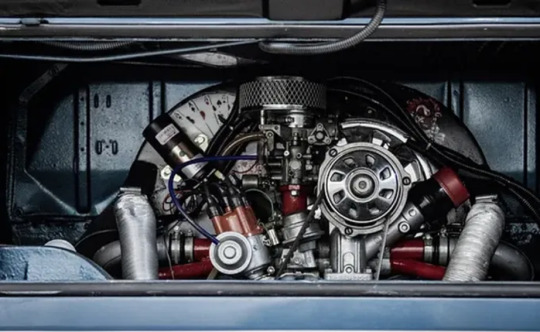
1. Generators
Generators are the heartbeat of a ship’s electrical system. They provide electrical power for various onboard systems, such as lighting, navigation equipment, communication systems, and HVAC (Heating, Ventilation, and Air Conditioning). Depending on the ship’s size and power requirements, multiple generators may be installed to ensure redundancy and continuous power supply during extended voyages.
2. Boilers
Boilers are essential for producing steam, which is utilized for various purposes on board. Steam is used for heating fuel oil and other fluids, running steam turbines for power generation, and operating various machinery and auxiliary machinery equipment, such as steam-driven pumps and winches.
3. Air Compressors
Air compressors generate compressed air used to power pneumatic tools, such as wrenches and chipping hammers, and operate pneumatic control systems. They also provide compressed air for starting main engines and auxiliary engines.
4. Purifiers
Fuel and lube oil purifiers play a critical role in maintaining the quality of fuels and lubricants used onboard. These machines remove impurities, water, and solids from fuel and oil, ensuring smooth engine operation and prolonging the life of critical machinery.
5. Refrigeration and Air Conditioning Systems
Refrigeration and air conditioning systems are vital for maintaining the temperature of provisions, perishable cargo, and living spaces. These systems use refrigerants and cooling coils to control temperature, humidity, and air quality throughout the ship.
6. Ballast Water Treatment Systems
To maintain stability and maneuverability, ships require ballast water to be pumped in or out as cargo is loaded or unloaded. Ballast water treatment systems are responsible for purifying and treating the ballast water to prevent the spread of invasive species and maintain marine ecosystem health.
7. Sewage Treatment Plants
Sewage treatment plants are responsible for processing and treating wastewater generated onboard. They help ensure that treated effluent meets international environmental standards before it is discharged into the sea.
8. Bilge Water Separators
Bilge water separators remove oil and other contaminants from the bilge water, a mix of seawater and oil that collects in the lower parts of the ship. The clean water is then discharged, while the separated oil is collected for proper disposal.
9. Incinerators
Incinerators are used to burn solid waste generated onboard, such as paper, cardboard, and non-recyclable plastics. Proper incineration reduces waste volume and ensures compliance with environmental regulations.
10. Water Makers
Water makers use reverse osmosis or distillation processes to convert seawater into potable water for drinking, cooking, and various onboard applications. They are especially vital for long voyages where access to freshwater sources may be limited.
Conclusion
The auxiliary machinery found on ships plays a crucial role in maintaining the vessel’s efficiency, safety, and comfort during journeys at sea. From power generation to waste management and water purification, each system contributes to the smooth operation and sustainability of modern ships. The continuous advancement of auxiliary machinery technology further enhances the capabilities and environmental performance of ships, making them safer, greener, and more reliable for maritime transportation across the globe.
#generator parts#ship machinery parts#navigation equipment#Auxiliary Machinery Equipment#Ship Machinery Parts#Auxiliary Machinery#Generator Parts#Automation#Navigation#pumps#automation systems
2 notes
·
View notes
Text
Two-wheeler spare parts and lubricants
Motolab is your trusted choice for two-wheeler spare parts and lubricants. Using the right spares we can make our two-wheeler perfect for each ride.“Motolab” offers high-quality lubricants and spares to enhance the efficiency and optimal performance of vehicles. In this age, the demand for spare parts and lubricants is increasing as it is crucial for keeping your vehicle smoothly. High-quality spare parts and lubricants ensure longevity and efficiency and protect your vehicle from friction and other breakdowns. Timely replacements are necessary to reduce the troubles and ensure the safety of riders. Keep understanding these things in mind, Motolab provides top two-wheeler spare parts and lubricants. In the case of spare parts, it is necessary to choose the right spare, because sometimes the problem of low-quality spares, results in trouble during the ride. With the increasing complexity of modern two-wheelers, there’s also a growing demand for advanced spare parts and lubricants. Lubricants play a critical role in the smooth operation of a two-wheeler. These products including engine oils, transmission fluids, and greases, help reduce friction between moving parts, minimizing wear and tear. They also assist in maintaining engine temperature and preventing corrosion. High-quality engine oil is essential for protecting the engine under varying conditions, particularly in regions with extreme weather. Regular oil changes contribute to better fuel efficiency and a longer engine lifespan. There is also a growing demand for synthetic lubricants, which offer better performance over a wider range of temperatures and provide superior protection compared to conventional oils. For purchase queries: call 9072020011 or 9072030011
#Lubricants#Engineoil#AutomotiveCare#MotorOil#TwoWheelerOil#OilChange#VehicleMaintenance#Lubrication#EngineProtection
3 notes
·
View notes
Text

1929 Duesenberg Model J Convertible Victoria Coachwork by Rollston
Duesenberg Model J and Model SJ
Fred Duesenberg was a master of creating engines and was a creative designer. He had a talent for conceiving new ideas and ways of doing things. The engines he constructed were beautiful, mechanically sound, and advanced. E.L. Cord gave him one task: 'Create the best car in the world.' This was a very tall order and came at a very difficult time in history. The onset of the Great Depression and the Stock Market crash was just around the corner. Competition in the luxury car segment was fierce and involved all facets of the automobile. The cylinder wars that began in the 1920s and continued into the 1930s had marque's trying to outdo each other on the bases of its engine output, the number of cylinders, and the speed of their ultra-luxury automobiles. Styling continued to be very important and often outsourced to the greatest designers and coachbuilders of the time. Maruqee's such as Cadillac, Packard, Rolls-Royce, Hispano-Suiza, Isotta Fraschini, Bugatti, and others were all trying to out-do each other and continue in business during this difficult point in history.
The Duesenberg Model J was first unveiled to the public at the New York Car Show on December 1st of 1928. Only the chassis and engine were shown and it still impressed enough to make front-page news. The wheelbase was 142-inches making it nearly 12 feet. The chassis had a six cross-members made it very sturdy and able to accommodate the heaviest of bodies. The engine had dual overhead camshafts and eight-cylinders with four valves per cylinder. It displaced 420 cubic-inches and produced an impressive 265 horsepower in un-supercharged form. The engine had been designed by Fred Duesenberg and constructed by the Lycoming Company, which had been recently acquired by E.L. Cord. There was a brilliant lubrication system which automatically lubricated various mechanical components after sixty to eighty miles. Two lights mounted on the dashboard indicated when the lubrication process was transpiring. After 750 miles, lights mounted on the dashboard would light-up indicating the oil required changing. After 1500 miles, the lights would illuminate indicating the battery should be inspected. The top speed was 119 mph and 94 mph in second gear. With the use of a supercharger, the top speed increased even further, to nearly 140 mph. Zero-to-sixty took around eight seconds with 100 mph being achieved in seventeen seconds.
2 notes
·
View notes
Text
ARGONUS INFO: the Elkinets, an "advanced" guide
(NOTE: description copy-pasted from DA where i normally post my works. any context that is missing here on tumblr can be found on my DA [linked here and on pinned post] )
[this is a single image best view if opened in a new tab. the top image was the first formal post about them, before i actually started my argonus worldbuilding series]
[re-uploaded due to original being posted from main]
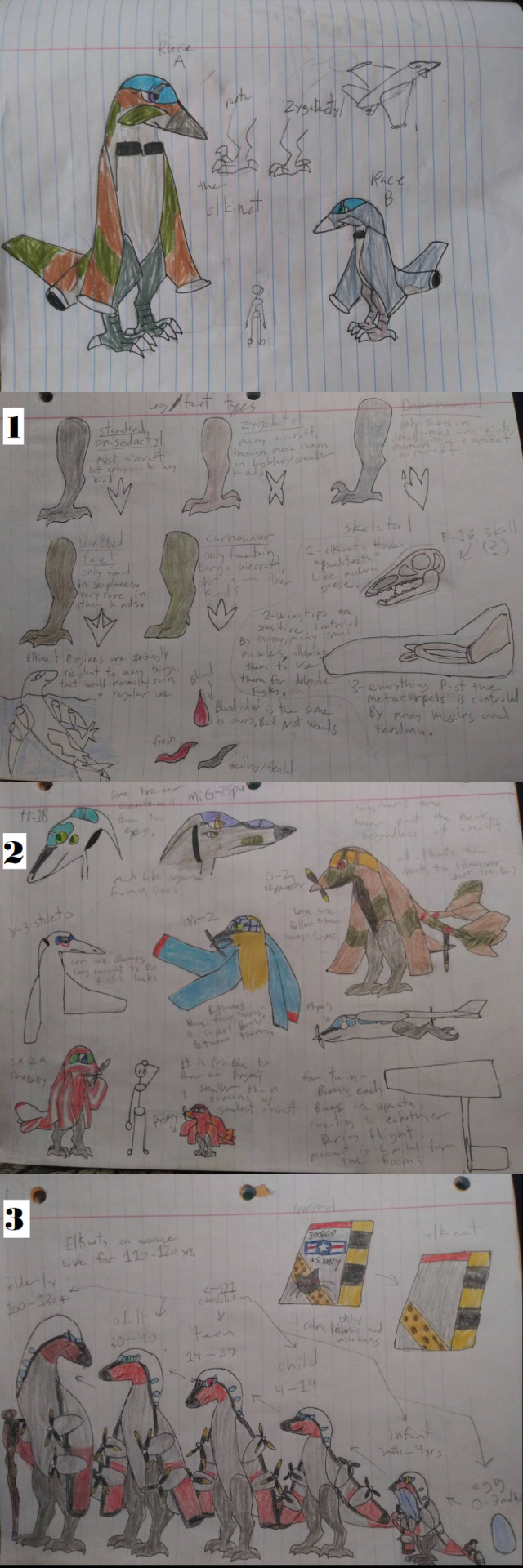
[tumblr edit: this guide is meant to be a "basic" guide to the elkinets themselves. obviously, because they represent airplanes and airplane-like drones, they come in such a wide variety. also, idk how the formatting is, so excuse any issues and mistakes. i also edited some grammar issues as well. ]
GENERAL BASICS elkinets, on the surface, look like your everyday generic aeromorph, that is a living aircraft with a humanoid shape (a rather "basic" one at that).
they have a clearly defined head, neck, body and tail. they stand on two legs, and the wings act as arms and hands when not used for flight. however, there are some things that separate them from other similar aeromorphs.
-excluding the engines (Later on that), they and the other aeronoids both have an entirely biological existence and an evolutionary background, being highly derived from argonus's early Psittacopasserae birds (parrots and passeriformes) during the late paleocene.
-the legs and feet aren't landing gear, rather they are much like that of birds and theropods, further reflecting on their evolutionary past.
-their skin is soft and leathery, not unlike that of a human's (kinda creepy, but whatever) it is, however, comparably the same thickness as our own.
-their cockpit / canopy / windows are purely aesthetic, having no real function. it is solid in color and made of skin like the rest of the body (they are often called "canopy/window integument")
-they have a skeletal structure not unlike other tetrapod's, alongside organs as well.
-there exist a dwarf / pygmy version of them, which occurs when there is a lack of natural resources.
now that's established some of the basics, we can get into the specifics of it. BODY SYSTEMS being a tetrapod, they have various organ functions, though here are listed some of the important one:
SKELETON: the skeleton of an elkinet is still similar to birds, but there are a few highly-derived parts of it. two major examples are the skull and arms. much of the skin covers the head like it would with the skull. it has lips to cover the "teeth", keeping them lubricated with saliva. these "teeth" aren't actually true teeth despite initial appearances. they are instead tomium (what geese have) that have the same function as canines, premolars and molars, covered in the same material as the beak. their incisors, however, are what's left of the actual beak they once had. both the beak and teeth constantly are growing, and while the process of mastication (chewing/grinding of the teeth) is often enough to keep them trimmed down, proper dental care is still required. the arms are also very derived from the original animal. everything is normal right up to the metacarpals, where we see the metacarpals small and atrophied. the metacarpal isn't completely useless, since it (alongside some cartilage) help anchor down the many muscles that make up the other half of the arm. just like modern birds, the bones are hollow. this allows them to stay relatively light in weight so they can much easily fly, but does raise the risk of injuring those bones. this is especially a problem with older, larger individuals.
MUSCLES: an elkinet's strength varies from aircraft to aircraft, but in any case they are pretty muscular regardless. the area with the most muscles are the half end of their wings. these muscles help move and control the rest of the wings, but more importantly they help manipulate objects. this is, obviously, because they have no fingers, so having those muscles are really useful for delicate task like writing. their legs are also pretty muscular, which is a given since they use them for getting around on the ground as well as taking off and landing. the tail stabilizers, canards and prop blades can also move around. those parts can move in a similar fashion to the wings, though more weaker and are often used as more of displaying emotions.
RESPIRATORY AND CIRCULATORY: while two different body systems, they go hand and hand together. -respiratory- the elkinets have a strong respiratory system. their lungs are large, having various air sacks to help with gas exchange. in addition, elkinets have re-evolves diaphragms. elkinets primarily breath through their nostrils, which can sometimes hide behind the engine intake if said engine is on the face. -circulatory- elkinets have a four-chambered heart, not unlike any other tetrapod. their blood is red, and so is a fresh wound. however, said wound then turns grey during the healing process (unless injury is permanent, then it stays gray). apart from where you'd usually find mass amounts of blood flow, the engines are also a major place for blood to go through, especially if being used in flight. the engines is always loosely connected to both circulatory and respiratory systems. when running, the engines can take in oxygen and puts it into the bloodstream. this is, however, not super effective since it only takes in 1/10 the amount than the lungs.
DIGESTION: contrary to what one may think, elkinets do not consume jet fuel, nor any kind of fuel, rather they eat actual food. elkinest are, for the most part, just as omnivorous as we are. they are capable of consuming both plants and meat, and have been domesticating animals and plants for food for many, many centuries. however, exactly which one they consume the most can vary. for example, larger aircraft may stick to a more vegetarian / vegan diet because plants are far more easier to produce and yield more food than animals. on the otherhand, some places don't have much land for growing crops, so they stick to eating mostly animals. and, of course, we cant forget about the various cultures and what they eat as well. since the elkinets have the tomium to help grind down food, they have de-evolved their gizzards as they serve no real purpose anymore. they do, however, still have a cloaca, the single hole on their butt that used for everything down their (waste + reproduction).
REPRODUCTION: i won't dwell on this too long since i don't like talking about it. all you need to know is that while their cloaca conceals their reproductive parts, they still have the usual reproduction organ that most other tetrapods have. they also lay eggs, like birds
PHYSICAL APPEARANCES & ANATOMY
now we head to the rest of the body and their physical appearances.
HEAD: like said with the skeleton, elkinets have a reduced beak that act as incisors while the tomium act as the rest of the teeth. but apart from that, what else is going on?
-canopy/cockpit: like said in the beginning, the canopy has zero function, at least by our terms. they do, however, serve as identifying features between individuals. the color of it will vary; most of the time it's some shade / hue of blue, but it can also be any color. the canopies' color always stands out from the rest of the rest of the body.
-eyes: eyes are rather human-like in shape, but the general style of them can vary. regardless, elkinets always have a clearly defined pupil and iris. and they come in a wide variety of colors (another way of identifying individuals). in very rare instances with trainer aircraft (particularly ones with separate canopies), the elkinet may have four eyes, much like the other argonian fauna. it's unclear why it's specific to trainer aircraft and not other kinds.
-ears: the one thing that remains consitant with the rest of argonian vertbrates are their ears; they have four earholes, which are covered by a flap of skin akin to an earlobe. they are desgined to protect their hearing durring flight.
-fangs: sometimes the canine part of the tomium can stick out of the mouth. these are usually small and dont create much of an issue.
NECK & BODY all elkinets have a neck, however short they may be. the neck and spine are very flexible, and the neck can turn a near 180 degrees. when standing, the body creates and S-like shape. although they may look top-heavy, they're center of gravity is actually around the pelvic region (Often helped with the tail), so they don't constantly fall over.
ARMS / WINGS the "hand" part of the wing is called the "paw", and in spite of it's shape it is extremely dexterous. alongside the muscles at the wingtips that control the appendage, the paw's underside (their "palms" so to speak) are as soft and sensitive as our fingers. the palms, as well as the underside of the paw in general, are also covered in setae (same stuff some geckos have), which they can control to hold / drop items. this allows them to hold smaller objects without moving much of the wingtip's' muscles. the length of the arm, regardless of aircraft, is always long enough to do basic arm stuff (grab, stretch etc.). they are also never past the neck of the elkinet, and are always directly connected to the body around the chest /abdomen area. in the multiplanes (biplanes, quadplanes, ect), there are no support beams between the wings, and as expected those extra wings will also function as arms.
LEGS AND FEET the legs of the elkinet are directly underneath the wings. although no longer needing to live in the trees like their passeriform relatives, most elkinet feet still are still capable of and used for perching and grabbing onto stuff. with some of the longer-winged aircraft, there comes longer legs to keep the wings from dragging onto the ground. the colors of the legs are always greyish in color, though can have a little tint to them. there are five major feet types when it comes to variations:
-standard anisodactyl: one of the most common leg types, all aircraft can be born with anisodactyl feet. these kinds of feet are not exclusive to one aircraft type, though sometimes they're more rarer in some types of aircraft than other.
-zygodactyl: another very common and non-exclusive feet type, these kinds of feet are more common in the smaller and lighter aircraft, especially in civilian and non-combat aircraft. some elkinets use zygodactyl feet to hold and manipulate objects, much like parrots do with their feet. skiplanes have a unique variation of this foot type that's semi-palmate (partially-webbed).
-dromaeosaurid: heading to the more exclusive kinds of feet, the dromaeosaurid feet (also known as raptor feet) are only seen in the small and medium-sized aircrafts. they are especially common in combat aircraft like bombers and fighters. although tipped with a large talon, rarely is the big toe ever used in combat outside of the military.
-webbed: while these feet are often in the shape of you average palmate (Like ducks and geese), they can also take the form of lobate feet (Like grebes and coots). they are exclusively seen in seaplanes and very rarely in other types. curiously enough, those rare times are often in navy and coast guard aircraft. as expected, these provide better mobility in water.
-carnosaur: of all the feet types, this is the only one that is incapable of perching or grabbing due to a heavily reduced rear toe. these are only found in transport aircraft and no other kinds have them. they are especially common in some of the biggest and heaviest of them.
TAIL beyond with flight, the tail also serves as a balancer to keep elkinets on their two legs. the tail is flexible and capable of moving around. the tail can be used as an indicator of emotions; an example is their tail swaying side to side. this is typically associated with being happy or content. all elkinets have a tailbone and some form of a tail. the twin-boomed aircraft are very interesting, in that their tail is boneless and part of the arm. each boom is separated from each other, allowing them to move independently. when in flight, however, they are held together by setae, same thing on the wingtips. they are limited in movement, however, and are primarily controlled by the base of the boom.
SIZE AND HEIGHTS from nose to tail, a normal elkinet is around the same lengths as their aircraft counterparts. however, that is not always the case; elkinets also have a pygmy version of them. pygmies are half the size of a normal elkinet, and come into the world of two way; being born by pygmy parents (Most common) or being born from a normal elkinet (very rare). the latter occurs when there is a lack of natural resources (water, food, etc.). this has, historically, happened on island and island continents, but in modern time it became prevalent in places of poverty. apart from the size, they're about the same as a normal elkinet. sometimes, especially with some of the smallest aircraft, pygmies can be smaller than humans. with individuals, however, there are some variations in size much like us. some individuals of the same age and kind can vary a little bit. this is especially in females, since they tend to be slightly larger than males.
GENDER DIMOPHISM female and male elkinets look almost identical, though there are some external giveaways to their gender.
-females: females, like said previously, are slightly larger than males. in addition they'll have some much fuller eyelashes, and often have a slightly more curved chest than the males (of which is mostly fat)
-males: the almost opposite, males are slightly smaller, with a flat chest and less full eyelashes (or in my drawing style no eyelashes).
[tumblr edit: later on, i would call males "toms" and females "sheplanes". also, yes, i know, typical "girl vs boy" anthropomorphisation. come complain to me..]
COLORS AND LIVERY contrary to our aircraft, elkients do not have any obvious letters, numbers or symbols as part of their liveries. they only have colors, patterns and markings (seen on last image). at most they'll have markings that very, very vaguely look like said symbols. the closest thing to having those as part of their livery is if it's tatooed on, otherwise it is worn as some form of clothing or accessory. while most of their livery is based on their real-world counterpart, they practically can have any kind of colors and liveries.
GENETICS & HYBRIDS
all elkinets are part of the genus aeros, and because of how closely related different kinds are, there is indeed a possibility to get a hybrid. between different aircraft, hybrids can vary from uncommon to very rare. in all cases, hybrid elkinets are usually a mix-and-match thing, having certain physical attributes greatly resembling one parent than the other, the most common of which is being one parent' species and the other's colors/livery. sometimes, though, other body parts can be taken into account like head, body, tail, engines, etc etc...however, there is more at play than just having the parents be two separate species. see, what comes out depends on the size difference between the parents. usually, the rule of thumb is that the smaller the mother is compared to the father, the more likely it is the baby will be the mother's species. here, i have a set of examples (disclaimer, I'm horrible at percentages):
if the mother's smaller than the father, it's the following statistics: -60%-90% chance of baby being mother's species -30%-5% chance to be father's species -10%-5% chance of baby being hybrid
if father's smaller than the mother, the statistics are swapped: -60%-90% chance of baby being father's species -30%-5% chance of baby being mother's species -10%-5% chance of baby being a hybrid
if both parents are close to or of exact same size, then it's different: -35%-40% chance of baby being father's species -35%-40% chance of baby being mother's species -30%-20% chance of baby being hybrid
of course, this is if the baby is conceived naturally. though, in the more modern age, parents can instead go to specialist to have their baby artificially conceived. the most common way of doing this is having a fertilized egg sit in an artificial "womb" until it developed into a more proper elkinet egg. these artificially conception creates the same chances of what comes out as if the parents were of same size. this method, however, is pretty costly and does require the two parents to go through paperwork and make sure that they're capable of taking care of the child.
ENGINES AND FLIGHT just like real-world aircraft, elkinets are fully capable of flight. however, their flight is pretty different than our aircraft.
ENGINES: the elkinets fly primarily with their engines. the engines are near-identical to our non-living aircraft, having the near same mechanisms and what not, particularly the insides of it (fanblade, compressors, turbines, ect). however, the materials are actually partially-biological, having keratin make up at least 30% of those part. this makes elkinets (alongside all other aeronoids) one of the very few times a biomechanical organism has evolved naturally. another thing that sets the elkinet's engines apart from normal aircraft is how resistant they are. things that would normal damage or strait up ruin an normal engine (water, debris, ect) have little to no effect on the elkinet's. their engines (if on the wings) are also firmly attached to the arms via cartilage, so it would take significant force or trauma for them to come off. however, the insides of the engines are also pretty sensitives, and they definitely would feel debris if it was caught up in there. thankfully the debris usually will comes out by itself with a few start-ups.
FLIGHT IN GENERAL: elkinets take off by having their engines at near-full power and either launching themselves into the air or getting a brief running start. once they've got air, engines go into full power and they fly off. regardless of what aircraft they are or the type of engines they got, all elkinets fly at the subsonic speeds of 200-210 mph (dependent on respective aircraft/engine types). since elkinets have no flaps or speed brakes, they usual stop/slow down by positioning themselves so that they reduce their speed (Much like what birds do when they come to land). elkinets will even deploy reverse thrust if they need to further slow down. like that famous saying from Issacs newton goes "what goes up must come down", and that stays true for the elkinets. for one, flying itself can burn alot of calories, especially if the engines are constantly running. another thing that limits the amount of time in the air is the fact that they have to hold their arms / wings strait out. while they have evolved to hold their arms out for long periods, they cant hold them out forever. in addition to normal flight, all elkinets are capable of gliding as well. and, depending on engine placement, they can also hover in the air even if they aren't vtol aircraft themselves. this, like with birds and the above stated, takes up lots of energy.
DEVELOPENT & LIFE CYCLE like practical any organism, elkinets have a life cycle and different life stages. typically, elkinet on average live for roughly 110-120 years, and have weird developmental stages too. although they reach a certain point where growth is suddenly slowed, elkinets never really stop growing. some of the largest elkinets are also some of the oldest. there are considered five different life stages
EGG (0-3 months): five months after conception's, the mother will give birth to an egg. the egg, while varying in color and sizes depended on species, will always be of the same shape. elkinet eggs are soft and leathery like a lizards, and create their own heat. however the egg must be protected and kept an eye on at all times, should the egg ever hatch or get damaged. the parents can either place the egg in a special nursery, or take the egg wherever they go. the gender of the child can be told two to three weeks prior to hatching via ultrasound.
INFANT (hatchling/hatchlet), 3 months-4 years: when first hatched, the infants eye are closed for the first five days. infants lack the tomnium when first born, an only gain them once two years of age. in the meantime, they are fed bland, pureed food (Not unlike our baby food), or if one to go the all-natural route, pre-chewed food. infant elkinets begin "walking" at age 5-8 months. or, more accurately, hopping. they start by bunny-hopping, that is lopping on all fours not unlike that of a rabbit. eventually, they'll begin to clumsily hop on two legs like a drunk kangaroo, and later at age 3, begin to walk normally. infants, before they're able to start talking, will make various chirps and hisses (which is said to be very much like that of a cheetah cub, caracal or baby racoon). they are also, obviously, incapable of flight since they lack the parts nessisarly to fly.
CHILD (aeroling), 4-14 years: at this age, not only are they talking and eating solid foods, but they've also developed the engine parts that allow them to fly. however, the engine are still very weak; at most they can glide short distances, so they need to exercise them in order to be able to properly developed flight. it's also at this age that they're put into the education system.
TEEN (Middling), 14-27: the midway point from child to adult. at exactly 16-17 they're considered sexually mature, however it is considered that the age of 22 is the appropriate age of consent. at this point, they're fully capable of flight, and at 19 they're considered old enough to work, go to collage or join the military.
ADULT (30-90): at this point, the growth is heavily slowed, but not stopped. apart from that, this is your typical adult stages you'd expect.
ELDERLY (100-130+): the final stages, elkinets begin to loose their flying abilities as their engines begin to weaken. any form of bright colors they had become darker and duller, and their health complications begin to rise. most elkinets will end up with mobility issues and will inevitable be unable to walk. usually these complications strikes larger aircraft earlier than the smaller ones
now, in some freak circumstances an elkinet's growth does not slow down much, if at all. it's very rare, and this most commonly happen in the pygmy elkinets. while this does sound cool, it only leads to a shorter lifespan.
MISC TRIVIA here, i have some various info and facts about the elkinets that don't entirely fit into the different points.
-elkinets, and practically all other aeronoids can survives slightly more hotter /colder temperatures than we do. they've only go into hypothermia (cold) when their body temperature hits 89.6 F, and hyperthermia (hot) when it hits 105.8 F. both those temperatures would kill us humans without immediate help. however they obviously try to avoid those dangers and will stay cool / warm when they can.
-elkinets will also wear clothing and accessories, not just for the above reasons but also for other reasons like vanity or rules and regulations.
-elkinets do indeed have vehicles. not surprisingly, most of them are aerial-base, but there are a plethora of land and water ones too. most of these vehicles, however, don't go as fast as you think. with the flying vehicles, they only go slightly faster than the fastest elkinets, if not the same speed as them. they're primarily used for long-distance travel and heavy transport.
-adult elkinets still do make animalistic noise, though unlike when they're young these noises are more akin to large carnivorans, such as growls, roars, screeches, and yowls. however, the noises aren't part of their actual language, they're more of sounds that display certain emotions.
-while capable of eating thing us humans can eat, there are also some foods they only they're capable of eating. holly berries are a good example, as they've been domesticating them for years for things like pastry filling, candy and rum (which, funny enough, made them less poisonous to humans).
-elkinets prefer to sleep on the bellies as it's more comfortable as apposed to sleeping on their backs
-elkinets usually do not naturally have any armaments to them whatsoever (missiles, guns, ect). those are usually part of armored suites worn by the military.
anyways, that's this post for now.
#argonus#planet argonus#speculative evolution#speculative zoology#speculative biology#anthro#aeromorph#anthro airplane#anthro plane#elkinet#worlbuilding#worldbuilder
4 notes
·
View notes
Text
PIPE-FREEING AGENTS AND SURFACTANT
In the dynamic world of oil and gas exploration, the efficiency and success of drilling operations are paramount. Amid the complexities of drilling through various geological formations, engineers and chemists have harnessed the power of specialized chemicals to overcome challenges. Two key players in this realm are pipe-freeing agents and surfactants, whose unique properties and applications significantly contribute to the optimization of drilling processes.

Pipe-Freeing Agents: Unleashing the Drill Pipe
Drilling for oil and gas often encounters a common adversary – the sticking of the drill pipe in wellbores. This phenomenon, known as differential sticking, arises from the formation of a filter cake on the wellbore wall. Enter pipe-freeing agents, also referred to as lubricants. These agents are designed to tackle this challenge head-on by modifying the properties of the drilling mud or fluid.
Friction Reduction The primary function of pipe-freeing agents is to reduce friction between the drill pipe and the wellbore. This reduction in friction is essential for maintaining the smooth movement of the pipe, preventing costly delays and potential damage.
Filter Cake Modification Pipe-freeing agents alter the composition and characteristics of the filter cake that forms on the wellbore wall. By doing so, they mitigate the risk of differential sticking, ensuring that the drill pipe can move freely through the wellbore.
Lubrication Acting as effective lubricants, these agents ensure the seamless and efficient movement of the drill pipe. In challenging drilling conditions, where forces can impede progress, lubrication becomes a crucial factor in maintaining operational momentum.
Surfactants: The Versatile Solution in Drilling Fluids
Surfactants, with their unique amphiphilic structure, find widespread use in drilling fluids within the oil and gas industry. Their ability to interact with both water and oil makes them versatile players in addressing various challenges associated with drilling operations.
Emulsification Surfactants play a crucial role in breaking down or stabilizing emulsions within drilling fluids. This property improves the overall stability and performance of the fluid, contributing to efficient drilling.
Wetting Enhanced wetting properties of drilling fluids are achieved through surfactants. This ensures better coverage on solid surfaces, promoting improved drilling efficiency.
Foaming/De-foaming Controlling the formation and elimination of foam in drilling fluids is vital for maintaining stability. Surfactants are adept at managing foam levels, preventing issues that can hinder drilling progress.
Cleaning Surfactants assist in the removal of contaminants from surfaces within the drilling system. This cleaning action contributes to the overall effectiveness and cleanliness of the operation.
Conclusion
In the ever-evolving landscape of oil and gas exploration, the role of pipe-freeing agents and surfactants is not only pivotal but transformative. These chemical marvels, with their ability to address challenges ranging from pipe sticking to emulsion stability, are indispensable tools in the hands of drilling professionals. As technology and chemical engineering continue to advance, the development of novel formulations and the strategic application of these agents will undoubtedly remain at the forefront of efforts to optimize drilling processes and ensure the sustainability of oilfield operations.
#PIPE-FREEING AGENTS AND SURFACTANT#PIPE-FREEING AGENTS#SURFACTANT#Universal Drilling Fluids#drillings fluids
3 notes
·
View notes
Text
Reminds me of the genre of engineering tweets that are like "the only technological advancements that are real & necessary are lubricants & sealants"

This post but in regards to the human body.
It's important to drink a lot of fluids when you're sick so that your body has the raw materials to generate gallons of snot.
110K notes
·
View notes